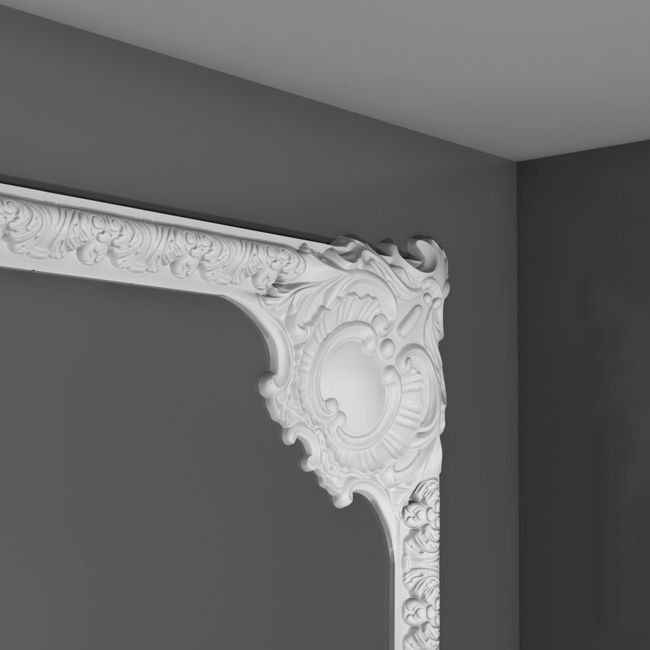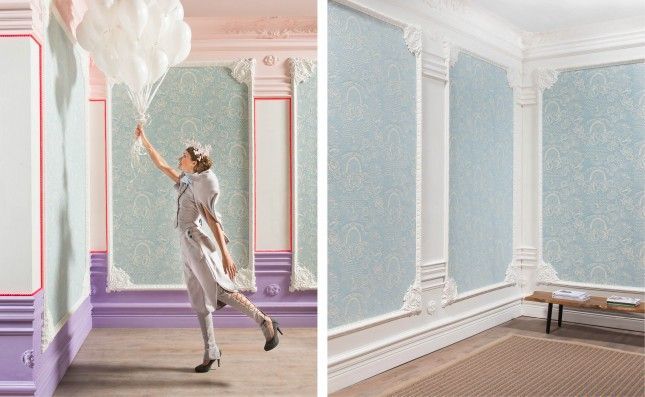Welcome to the world of decorative corner wall molding! If you’re looking to elevate your home decor while adding a touch of elegance, you’re in the right place. Having used molding in my own home renovation, I can attest to the transformative effect it can have. In this article, we will explore everything you need to know about decorative corner wall molding, from styles and benefits to installation and maintenance tips. Let’s dive in!
What is Decorative Corner Wall Molding?
Decorative corner wall molding, often referred to as crown molding or cornice, is a type of trim that is strategically placed at the intersection of walls and ceilings. It serves both aesthetic and practical functions, adding character and sophistication to any room. Beyond mere decoration, molding helps conceal imperfections in wall and ceiling joints.
Types of Decorative Corner Wall Molding
There are various styles of corner wall molding available, each offering unique benefits to suit different tastes and home designs.
1. Crown Molding
Crown molding is perhaps the most commonly recognized type of wall molding. It’s designed to add elegance to a room by creating a seamless transition from the wall to the ceiling. It comes in various styles, from simple to intricate designs.
2. Baseboard Molding
While primarily used at the floor, baseboard molding can also play a decorative role at wall corners. It can add a traditional or modern feel, depending on the design.

3. Chair Rails
Chair rails are horizontal moldings placed around the room, usually at the height of a chair back. They serve a dual purpose by protecting walls and adding visual interest.
4. Corner Molding
Corner molding specifically addresses the interior angles of walls. It can be simple or ornate, and is usually installed where two walls meet to enhance the overall design.

Benefits of Decorative Corner Wall Molding
Investing in decorative corner wall molding comes with a plethora of benefits:
- Aesthetic Appeal: Instantly elevates the look of any room.
- Conceals Imperfections: Hides gaps and imperfections in wall joints.
- Increases Property Value: Enhances overall home value and attractiveness.
- Versatility: Available in countless styles to match any decor theme.
How to Choose the Right Decorative Corner Wall Molding
Selecting the right molding for your space can be overwhelming. Here’s how to make the best choice:
- Consider Your Space: Take into account the room’s style, size, and height. Wider, elaborate moldings work well in larger rooms, while simpler styles are best for smaller spaces.
- Match Your Decor: Look for moldings that complement the existing design elements in your home.
- Material Matters: Choose materials that align with your budget and installation preferences. Wood, polyurethane, and plaster are popular options, each with pros and cons.

Installation of Decorative Corner Wall Molding
Installing decorative corner wall molding may seem like a daunting task, but it can be a rewarding DIY project. Here’s a step-by-step guide to help you through the process.
Tools and Materials Needed
- Molding of your choice
- Miter saw
- Measuring tape
- Caulk and caulking gun
- Wood glue
- Nails and a nail gun (or hammer)
- Paint or stain (if needed)

Step-by-Step Installation Process
- Measure Your Walls: Begin by measuring the length of each wall where the molding will be installed. Make sure to note the angles, especially in corners.
- Cut the Molding: Using a miter saw, cut the molding at 45-degree angles for corners. Ensure that your cuts are precise to achieve a seamless fit.
- Dry Fit the Pieces: Before attaching anything, dry fit the pieces to verify they meet correctly at the corners.
- Attach the Molding: Begin attaching the first piece with wood glue and nails. Ensure it is level and secure.
- Fill Gaps: Use caulk to fill any gaps or seams for a polished finish. Allow it to dry before painting or staining.
- Final Touches: Once everything is secured, apply paint or stain to achieve your desired look.
Maintenance of Decorative Corner Wall Molding
To keep your corner wall molding looking fresh and new, consider the following maintenance tips:
- Regularly dust and wipe down the molding to prevent the buildup of dirt.
- Inspect for any signs of damage, such as cracks or peeling paint, and address them promptly.
- Repaint or refinish as needed to match your decor or trends.

Creative Ideas to Use Decorative Corner Wall Molding
Beyond traditional installation, there are many creative ways to utilize decorative corner wall molding:
- Accent Walls: Create an accent wall by pairing molding with bold wall colors or wallpaper.
- Layering: Combine different types of molding for a more dramatic effect.
- Lighting Effects: Incorporate LED lighting above crown molding for a modern touch.
Comparison Table: Types of Decorative Corner Wall Molding
| Type | Pros | Cons |
|---|---|---|
| Crown Molding | Elegant, enhances room height | Can be expensive, requires precision cutting |
| Baseboard Molding | Protects walls, available in various styles | May not suit all decor styles |
| Chair Rails | Functional, stylish, protects walls | Limited to specific wall placements |
| Corner Molding | Simplifies corner joins, visually appealing | Can be overlooked, limited to corners |

Pros and Cons of Decorative Corner Wall Molding
Pros
- Enhances aesthetic appeal of any space
- Offers a variety of design options
- Increases overall property value
- Conceals imperfections in wall seams
Cons
- Can require professional installation, especially for intricate designs
- Higher cost for premium materials
- May limit wall decor options such as artwork placement
Frequently Asked Questions (FAQs)
1. What materials are used for decorative corner wall molding?
Decorative corner wall molding can be made from several materials, including wood, MDF (medium-density fiberboard), polyurethane, and plaster. Each material has its pros and cons in terms of cost, weight, durability, and ease of installation.
2. Can I install decorative corner wall molding myself?
Yes, many homeowners choose to install decorative corner wall molding themselves. It can be a rewarding DIY project if you have the right tools and follow installation guidelines carefully. However, for intricate designs, hiring a professional might be beneficial.
3. How do I maintain and clean my decorative corner wall molding?
To maintain your molding, simply dust it regularly and wipe it down with a damp cloth. Inspect for damage and consider repainting or refinishing as needed to keep it looking its best.
4. Is decorative corner wall molding worth the investment?
Absolutely! Decorative corner wall molding not only enhances the beauty of your home but also adds value to your property. It’s a timeless design element that can suit any style.
5. Can I use decorative corner wall molding in any room?
Yes! Decorative corner wall molding can be used in any room, including living rooms, bedrooms, dining areas, and even bathrooms. Just be sure to choose a style that complements the specific room’s decor.
In conclusion, decorative corner wall molding is a fantastic way to elevate your home decor while providing practical benefits. Whether you’re a DIY enthusiast or prefer the help of professionals, the options and benefits are plentiful. Embrace your creativity and let corner wall molding transform your home into a sophisticated haven.